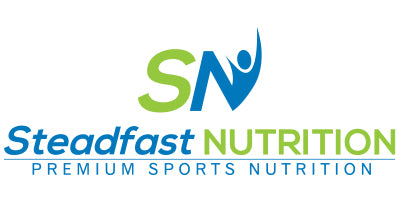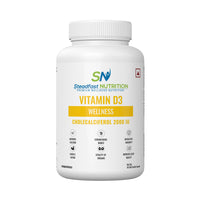ABSTRACT
Calciferol (Vitamin D) is well known as a group of the fat-soluble component with 4-ringed cholesterol as a backbone, and it refers to, Vitamin D3, i.e., cholecalciferol and Vitamin D2, i.e., ergocalciferol. Vitamin D, in general, refers to Vitamin D3. About 90% of the requirement of Vitamin D in our body is synthesised in the skin under daily sun exposure.
The prevalence of Vitamin D deficiency ranges from 40% to 99%, with most of the studies reporting an extensive spread of 80%–90%. It was present in all the age groups and high-risk groups as well.
As we have fewer dietary sources of vitamin D, it has been suggested to incorporate the supplements of vitamin D into the daily diet.
INTRODUCTION
Vitamin D is widely known as one of the most important fat-soluble vitamins which play a major role in human physiology. But vitamin D deficiency has been prevailing widely ranging from 40% to 99%, with most of the studies reporting an extensive spread of 80%–90%. It was present in all the age groups and high-risk groups as well. (1)
Calciferol (Vitamin D) is well known as a group of the fat-soluble component with a 4-ringed cholesterol spine, and it refers to both Vitamin D3 i.e. cholecalciferol and Vitamin D2 i.e. ergocalciferol. (2) Vitamin D, in general, refers to Vitamin D3. About 90% of the requirement of Vitamin D in our body can be synthesised in the skin through daily sun exposure. (3)
It is mainly needed to maintain the normal levels of calcium and phosphate in our blood, which is very much required for normal mineralization of bones, muscle contraction, nerve conduction, and general cellular function in our body. It is also known for its importance in proper immune function, to reduce inflammation and cell proliferation. (3,4)
The direct intake of the active form of Vitamin D initiates the absorption of calcium in the duodenum and further increases calcium influx in distal tubules of the kidney through nuclear Vitamin D receptors, and later it is specifically regulated by parathormone level in the body. (5)
It has been recorded that Vitamin D deficiency is out of control in India.
One of the main reasons for deficiency is the less number of sources of Vitamin D available with low consumption of those sources across the masses. And people who are suffering from liver, kidney and skin disorders will see more defects than other people.
Some of the major reasons are listed below:
- Less exposure to sunlight, as a bigger portion of the population stays indoors during the day, has been noted majorly in urban cities.
- Another reason can be pollution which stops the synthesis of Vitamin D in the skin by UV rays (6)
- Changes in food & cultural habits can lead to inadequate intake of calcium and vitamin D.
- Phytates and phosphates that are majorly present in the fibre-rich diet are seen depleting Vitamin D stores in the body (7)
- Many people suffer from skin pigmentation, and others apply sunscreens in the daytime
- Pregnant women with less intake of Vitamin D can worsen the health status of mother and child. (8)
The most common repercussions of Vitamin D deficiency found to be rickets in children and osteomalacia and osteoporosis in adults. In children, deficiency causes bone mineralization due to imbalanced absorption of calcium and phosphorus in the bones, which further leads to rickets and external skeleton bone deformities. It may cause weak muscles and pain in the bones. In adults, due to less dietary intake of Vitamin D shows poorly absorbed calcium from the diet. And increases the calcium resorption from the bone and kidney and decreases the bone mineral density further leading to osteoporosis and osteomalacia, muscle weakness and increased risk of falls. It is said that Vitamin D may help in increasing muscle strength, which can go forward to prevent falls. Many types of research have indicated the connection between low intake of Vitamin D and an increased risk of fractures and falls in older adults.(9,10,11,12)
CONCLUSION
As we have fewer dietary sources of vitamin D, it has been suggested to incorporate vitamin d capsules into the daily diet. The first step will be to check serum 25-hydroxyvitamin D levels to diagnose the amount of deficiency a person has. A further course of action will be the supplementation of vitamin D2 or vitamin D3 as per the deficiency. A meta-analysis published in 2007 has shown a decreased mortality rate with the added supplementation of Vitamin D.
References
1. P Aparna , S muthathal, Baridalyne Nongkynein (2018 March) Vitamin D Deficiency in India, 7 (2) 324-330
2. Houghton LA, Vieth R. The case against ergocalciferol (Vitamin D2) as a vitamin supplement. Am J Clin Nutr. 2006;84:694–7. [PubMed]
3. Holick MF. Vitamin D: A millenium perspective. J Cell Biochem. 2003;88:296–307. [PubMed]
4. Kumar V, Abbas AK, Aster JC. Robbins Basic Pathology. Environmental and Nutritional Diseases. 9th ed. Philadelphia: Elsevier Saunders; 2013. pp. 438–41.
5. Holick MF. The Vitamin D epidemic and its health consequences. J Nutr. 2005;135:2739S–48S. [PubMed]
6. Babu US, Calvo MS. Modern India and the Vitamin D dilemma: Evidence for the need of a national food fortification program. Mol Nutr Food Res. 2010;54:1134–47. [PubMed]
7. Harinarayan CV, Ramalakshmi T, Prasad UV, Sudhakar D, Srinivasarao PV, Sarma KV, et al. High prevalence of low dietary calcium, high phytate consumption, and Vitamin D deficiency in healthy South Indians. Am J Clin Nutr. 2007;85:1062–7. [PubMed]
8. Ajmani SN, Paul M, Chauhan P, Ajmani AK, Yadav N. Prevalence of Vitamin D deficiency in burka-clad pregnant women in a 450-bedded maternity hospital of Delhi. J Obstet Gynaecol India. 2016;66:67–71. [PMC free article] [PubMed]
9. Holick MF, Chen TC. Vitamin D deficiency: A worldwide problem with health consequences. Am J Clin Nutr. 2008;87:1080S–6S. [PubMed]
10. Holick MF. The role of Vitamin D for bone health and fracture prevention. Curr Osteoporos Rep. 2006;4:96–102. [PubMed]
11. Hazell TJ, DeGuire JR, Weiler HA. Vitamin D: An overview of its role in skeletal muscle physiology in children and adolescents. Nutr Rev. 2012;70:520–33. [PubMed]
12. Trivedi DP, Doll R, Khaw KT. Effect of four monthly oral Vitamin D3 (cholecalciferol) supplementation on fractures and mortality in men and women living in the community: Randomised double blind controlled trial. BMJ. 2003;326:469. [PMC free article] [PubMed]


